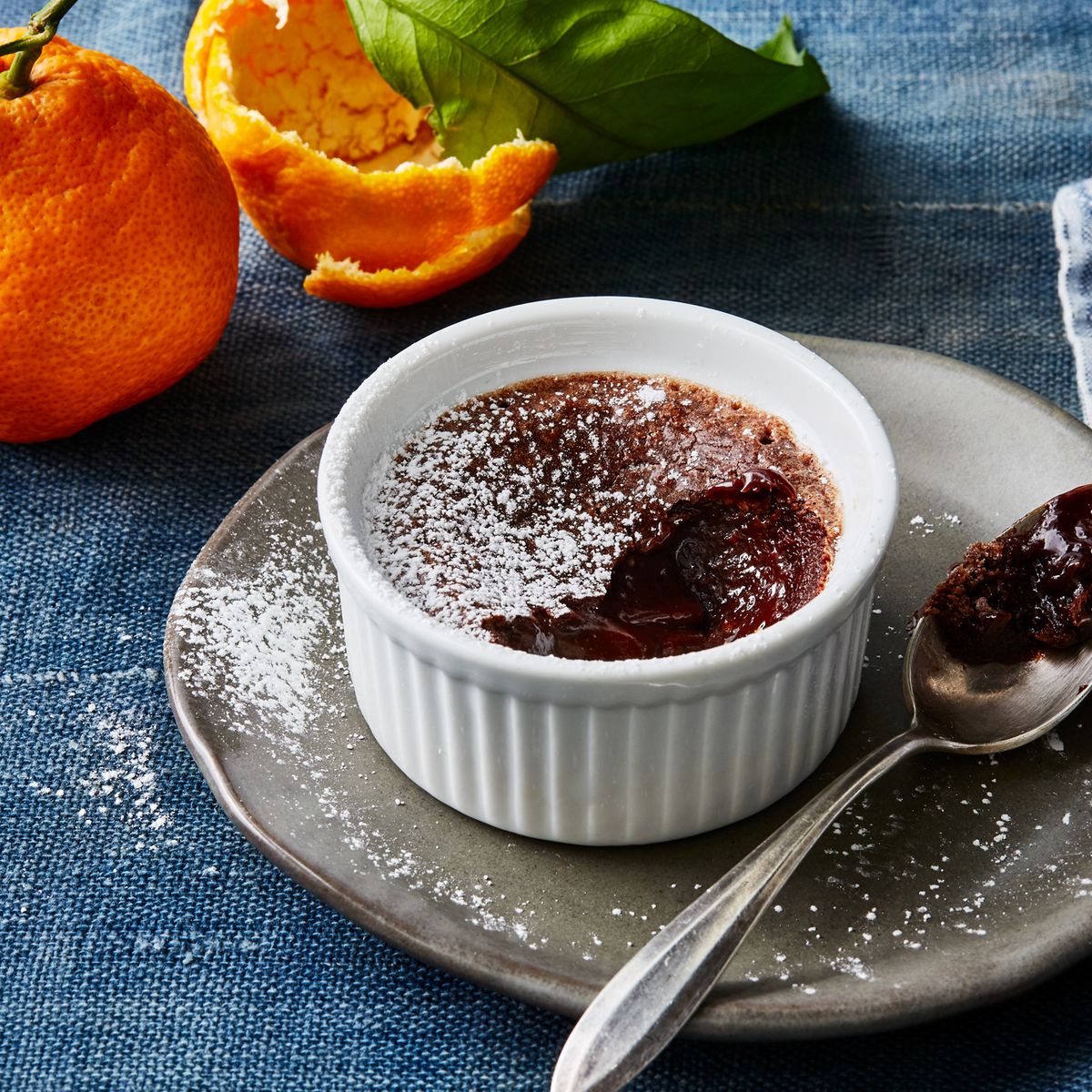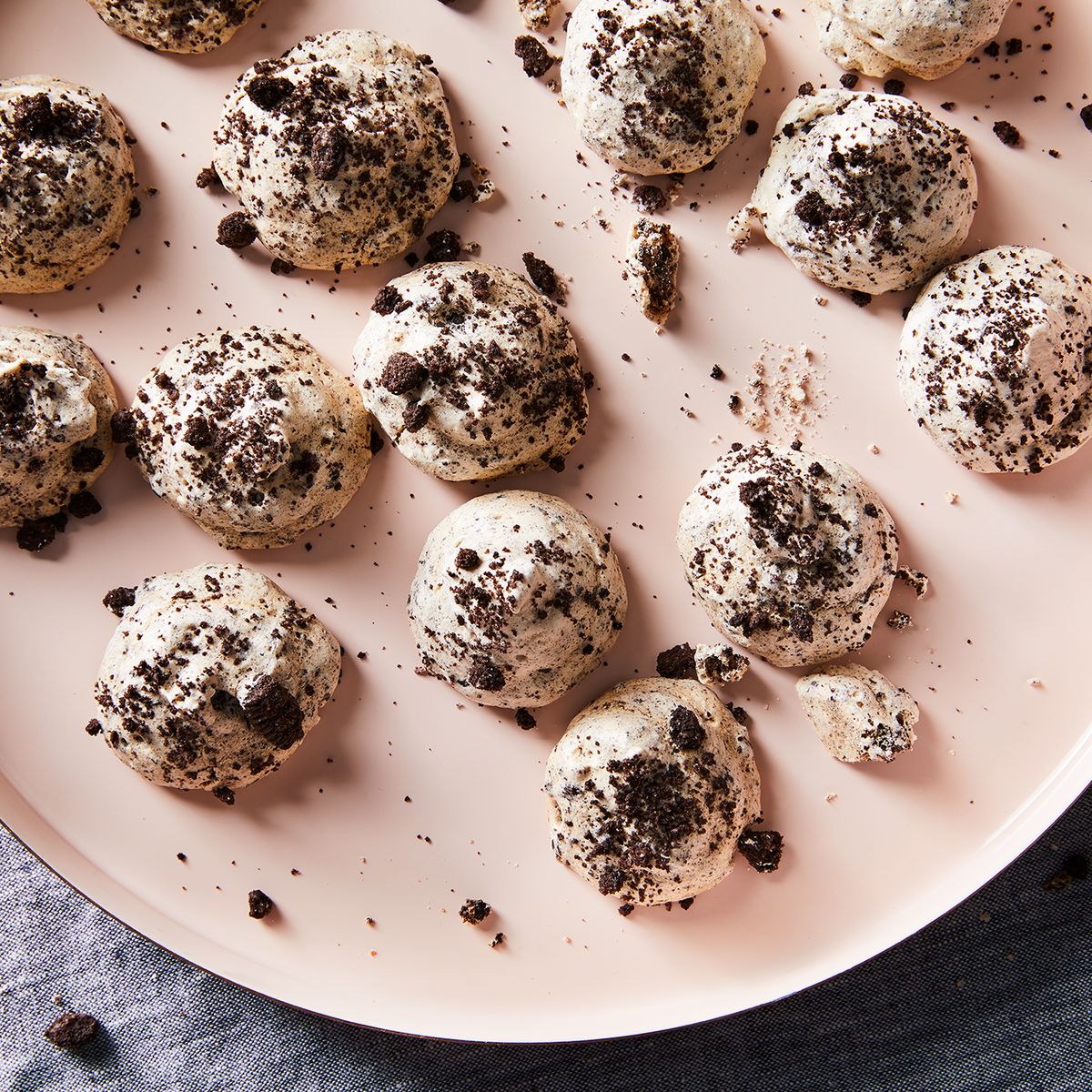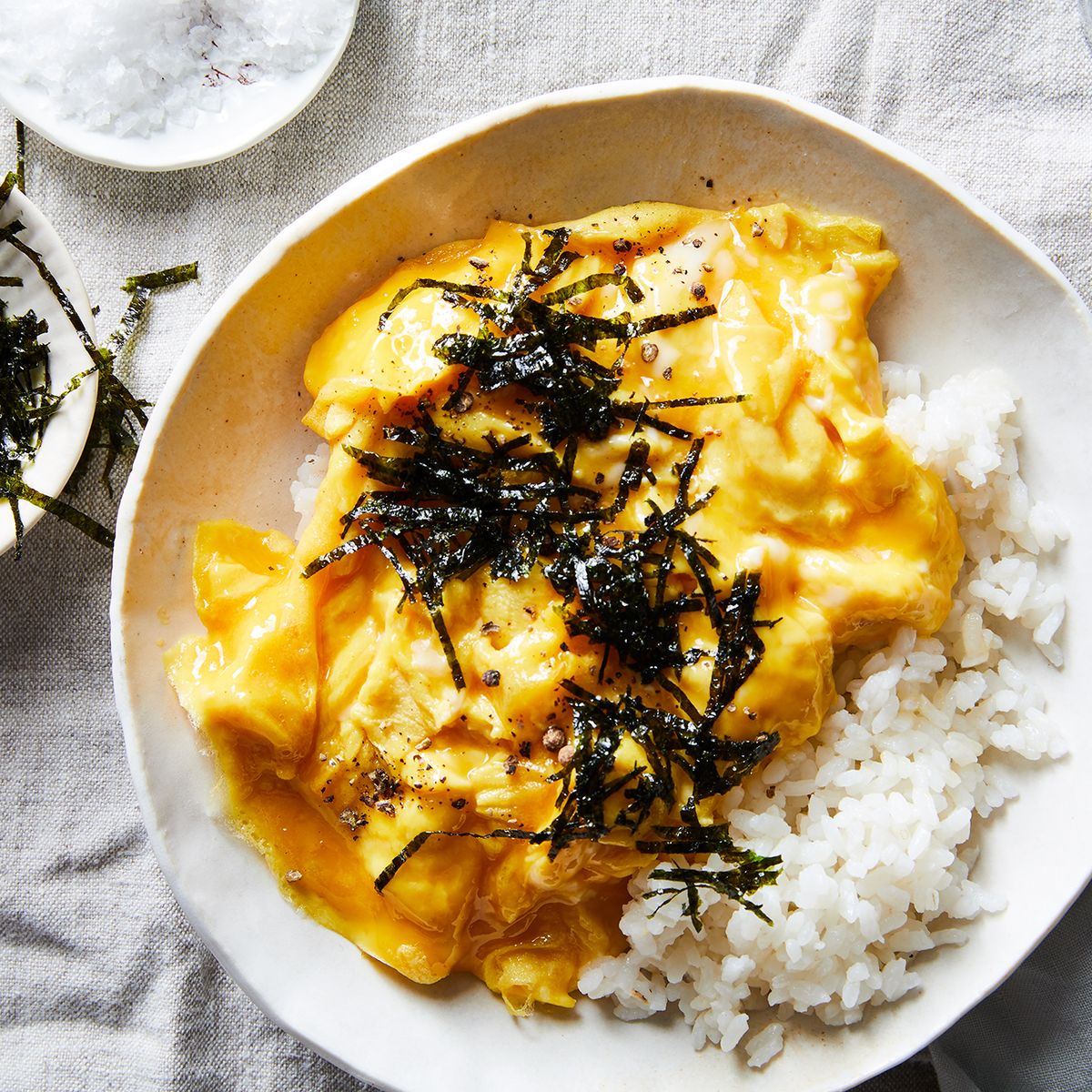Recipes By Eric Kim
212 recipes found

Roasted Chicken Stock
One of the great joys of roasting a chicken is turning the bones into stock. This simple golden elixir, a real panacea for life’s ailments, starts with a leftover carcass from a roasted chicken, one you’ve already eaten and picked the meat off of. What you’re going for here isn’t clarity in looks or flavor, as you might with a traditional French stock. Instead, this version is deeply fortified with alliums, bay leaves, peppercorns and a touch of turmeric for earthy depth and spiced savoriness. This stock is great to cook with, but also tastes excellent sipped straight from a mug like tea.

Creamy Baked Macaroni and Cheese
This macaroni and cheese recipe, inspired by Stouffer’s, delivers the best of all worlds: creamy, saucy comfort, with a consistency that’s slightly more set than a stovetop version, thanks to a final bake in the oven. It stays voluptuous and molten as a result of a higher ratio of sauce to noodles, which are cooked completely so they don’t soak up as much liquid. The Velveeta is necessary here, as it has sodium citrate, which prevents the sauce from separating in the oven. Elbow macaroni works fine, but cavatappi is an especially fun shape to eat with its telephone-cord bounciness.

Cold Noodles With Tomatoes
Halved cherry tomatoes provide a strong flavor foundation for this cold noodle dish that’s at once savory like gazpacho and refreshingly satiating like naengmyeon, the chilled Korean noodle soup. Inspired, too, by oi naengguk, a hydrating cold cucumber soup, this dish leans into the wonders of ripe tomatoes and lets you taste them as they are: raw and juicy. Julienned cucumber would taste wonderful here, as would supple poached shrimp or halved hard-boiled eggs.

Smacked Cucumber ‘Quick Kimchi’
This is not a traditional kimchi, but it approximates the flavor profile, bypassing a lengthier fermentation and instead relying on vinegar. Considered a muchim in Korean — which can refer to any number of “seasoned” or “dressed” salads or other preparations — this dish is best eaten right away, or at least within 24 hours, while cucumber’s characteristic crunch is still intact. The smacking step creates craggy edges that help better absorb the spicy, funky dressing, so don’t skip it. If you can, place a bowl under the colander in Step 1 to catch the cucumber brine; it tastes fabulous in a martini. Enjoy this as a side salad alongside any grilled main dish, especially steak, or any type of barbecue. For a vegetarian option, you can swap out the fish sauce for soy sauce.

Dark & Twisty
This is a cool and refreshing Ginger Scotch recipe that uses The Balvenie 12 Year Old Doublewood along with ginger beer to create a delicious cocktail.

Fettuccine Alfredo for One
This recipe is simple, it's just fettuccine, butter, and cheese all tossed together with a starchy sauce. It is so easy you can make it for one!

Clementine Chocolate Lava Cakes
In this recipe I've found that a contrast in temperature and flavor—in the form of cool, soft vanilla ice cream—is wonderful relief against the hot Lava Cake.

3-Ingredient Oreo Meringues
With just three ingredients (egg whites, sugar, and Oreos), the easiest, chewiest pantry dessert is yours at the flick of a whisk. If you wanted, you could pipe out mini cookies from a pastry bag, raindrop-shaped meringues. Just make sure to bake them for a shorter amount of time, as they'll be smaller and more prone to brittleness. More often than not, however, I like to go the ice cream scoop route, not least because I'm lazy (and because their chewy texture is nonpareil).

Tamagoyaki-Inspired Scrambled Eggs
This recipe's tamagoyaki-inspired soft scrambled eggs taste like tamago nigiri, but are faster and easier to make. Serve over rice for an easy, delicious meal.

Grilled Corn & Ranch Pizzas
Corn, when grilled like this, gets chewy and inexplicably sweeter. Basil adds a floral note. But the real clincher is the masochistic drizzle of ranch dressing (especially Hidden "Vale/Dell/Glen/Geologic Window"), which picks everything up and works surprisingly well with the cheesy corn.

Warm Eggplant & Mint Salad
The eggplant I knew, growing up, was a bland, bitter Korean banchan called gaji bokkeum (“stir-fried eggplant”). Sesame oil, burnt garlic, salt, maybe soy sauce. This is not that. When you roast the eggplant, char it at the edges, you somehow make it earthy again, like ash, which is a welcome substratum for fresh mint, a pinch of sugar for balance, and a bright, yellow squeeze of lemon. The lemon juice is insurance against that styrofoam texture you can sometimes get with undercooked eggplant, as are the extra five minutes at the very end, when you leave your warm, fully dressed sheet-pan salad in the oven to finish alloying.

Sheet-Pan Bibimbap
Bibimbap, the Korean mixed rice dish, is a kaleidoscope of flavors and textures. The popular dish has multiple origin stories and, like banchan and kimchi, many variations. Cooks who ordinarily keep namul (seasoned vegetable) banchan in the fridge may add them to a bowl with leftover rice and seasonings like spicy-sweet gochujang and nutty sesame oil, for example. Or, if starting their bibimbap from scratch, some may prep each component separately. But here’s a fun way to accomplish everything at once: Roast a melange of bits and bobs on one sheet pan as rice heats and eggs oven-fry on another. The caramelized sweet potato and salty kale in this formula come highly recommended, but you can use any vegetables on hand, reducing cook times for delicate options such as spinach, scallions or asparagus. (Watch Eric make this on YouTube.)

Pineapple-Marinated Chicken Breasts
Bromelain, the group of enzymes in fresh pineapple, is excellent at breaking down the connective tissues in thick, fibrous chicken breasts. In this simple marinade, grated pineapple completely alters the texture of the breast meat, resulting in something that’s akin to luscious dark meat. Briefly marinating here is important: Leave it too long and the chicken will fall apart during cooking, becoming shreddy and a little gluey. Fifteen minutes is the sweet spot. The accompanying pineapple salsa is a bright topping for the juicy morsels of aromatic chicken and rice.

Dry-Brined Chicken Breasts
A short, simple dry brine can take a pallid chicken breast from bland to glam. Dark brown sugar is especially welcome since its molasses provides additional moisture. Dried bay leaves, ground to a powder, lend an aromatic woodsiness that will make you think, “Oh, that’s what bay leaves taste like.” But it’s the salt here that’s most crucial, as it draws out the meat’s water. That water then dissolves the salt and, through diffusion, the two reenter the meat, seasoning the chicken thoroughly and encouraging water retention during cooking. You can enjoy it right out of the skillet with a spritz of lime juice or save it to serve in salads, sandwiches, fried rice and the like.

Ritzy Cheddar Chicken Breasts
They’re as good as they sound: cheesy chicken cutlets coated with buttery Ritz crackers. Skipping the usual flour-egg-bread crumb dredge, this recipe relies instead on a flavorful base layer of tangy sour cream, which has lactic acid that tenderizes boneless, skinless chicken breasts beautifully. When it comes to breaded white meat, thin cutlets are ideal, which you can buy from the store or achieve by slicing thick breasts in half horizontally (no pounding necessary). They cook more evenly this way, staying tender throughout as they’re quickly baked in a hot oven. Serve with something fresh — a big green salad, perhaps — to balance the wonderful richness of this nostalgic number.

Crispy Smashed Chicken Breasts With Gin and Sage
This stellar chicken dinner, adapted from Amy Thielen’s forthcoming cookbook “Company” (W. W. Norton, 2023), is full of delights and surprises. Boneless, skin-on breasts, cooked almost entirely on their skin sides, gain a savory, juniper-pierced jus and taste fabulous in between bites of crispy sage leaves. “If someone were to stand over a pan of sautéing chicken holding an ice-cold martini and happen to slosh it into the pan, you would have this sauce,” she writes.

Crispy Wonton Chicken Salad
This dynamic chicken salad, starring crispy strips of fried wonton wrappers, draws inspiration from the wonton chicken salad at the soup and salad buffet chain Sweet Tomatoes, as well as the American Chinese chicken salads that pervaded chain-restaurant menus throughout the 1990s and early 2000s. In a supporting role, letting the crispy wontons shine, is the punchy dressing of peach preserves, rice vinegar, sesame oil and chili powder. The dressing’s low oil content – plus the addition of mayonnaise, which helps create an emulsion – means the salad greens stay crunchy and keep for longer. For the chicken, you can use any leftover meat or tear pieces from a store-bought rotisserie bird.

Sheet-Pan Kimchi Fried Rice
Kimchi fried rice doesn’t need a weeknight makeover — it’s already so easy. But this oven method maximizes the surface area of the dish by using a sheet pan, increasing the potential for that coveted nurungji, or scorched rice. By baking this dish, you can start with fresh rice (no need for day-old), as the dry oven heat draws out the moisture from the moist grains and turns them crispy-chewy, plus the only active cooking required here is stirring together the ingredients. The oven handles the rest, which means no actual stir-frying. Eggs cracked on top, gently baked to silky perfection, are a necessary finish, as the runny yolks sauce the gochugaru-stained rice.

Roasted Chicken Thighs With Tangy Apricots and Carrots
As with J. Kenji López-Alt’s mayo-marinated chicken or Ali Slagle’s ginger-lime chicken, this streamlined recipe takes advantage of the best qualities of mayonnaise. Here, serving as both chicken marinade and cooking fat, mayonnaise underpins a sweet and tangy sauce warmed through with chili powder (the spice blend used for chili, not powdered chile peppers). Dried apricots, rehydrated in the pan juices, add delightful morsels of tangy wonder. This recipe features roasted carrots, but you could use any vegetable you like: Sliced red onions and parboiled fingerling potatoes are just a couple of ideas. Serve with white rice or other grains.

Microwave-Steamed Eggs
The reward for this delightful steamed egg dish, smooth and savory, will seem much too high for the effort. Reminiscent of Chinese zheng shui dan, Japanese chawanmushi and Korean gyeran jjim, this streamlined recipe cooks entirely in the microwave. The key to that perfect, soft-set wibble-wobble texture (think silken tofu) is using your microwave at around 500 watts — or half its power on a 1,000-watt machine. This lower heat lets the eggs and broth steam together gently until they cohere into something ethereal, existing somewhere between liquid and solid. More slurpable than chewable, it tastes fantastic as a light starter or breakfast on its own, or for lunch or dinner alongside steamed rice and other dishes to complete the spread.

No-Churn Olive Oil Ice Cream With Hot Fudge
At Ecco restaurant in Atlanta, one dessert stands above the rest: a salted olive oil gelato. Inspired by that dish in flavor but not in method, this frozen treat doesn’t require an ice-cream maker. Instead, a sweetened condensed milk base, flavored with olive oil, is lightened with whipped cream and frozen. Once this fluffy mass is firm and scooped, the silky texture will make you think: Why does anyone churn at all? The hot fudge sauce, with its chewy texture and deep, chocolaty flavor, is as easy to make and uses up the other half of a 14-ounce can of sweetened condensed milk.

No-Bake Melon Cheesecake Bars
Reminiscent of honeydew-scented Korean ice cream bars, this no-bake cheesecake leans into a fruit flavor that hasn’t had enough time in the sun: melon. Here, fresh cantaloupe purées into a smooth, fluffy pulp that sets into cheesecake, thanks to gelatin. Where the thick, salty-sweet base layer of buttery crackers will satisfy the crust lovers out there, the soft-set filling will change minds about what melon can truly do. Though the final drizzle of honey is optional, its floral taste works beautifully with the cantaloupe.

Salisbury Steak
In the United States today, most people might know Salisbury steak as a TV dinner. When made from scratch with just the right mix of Worcestershire sauce, ketchup and brown sugar, the tender beef patties smothered in gravy are a hearty, soul-warming staple. The original dish was named after Dr. James Henry Salisbury, who famously recommended eating it for health reasons. This version is all about how delicious the meal is and leans into its savory flavors, especially the umami-rich onion and mushrooms in the sauce. Serve these mini Salisbury steaks with green vegetables and steamed white rice, mac and cheese, gamja salad or mashed potatoes.

Roasted Chicken With Fish-Sauce Butter
Roasting chicken thighs in a hot oven is a hands-off way to achieve two of life’s greatest pleasures: crispy skin and golden schmaltz. And you want that chicken fat because it will crisp hand-torn bread into croutons. This meal is made even more lovely thanks to a bold but balanced fish-sauce butter that you whip up on the stovetop while the rest of the meal takes care of itself in the oven. Be sure to start with cold butter; the gradual melting of the fat helps thicken the sauce without breaking it.